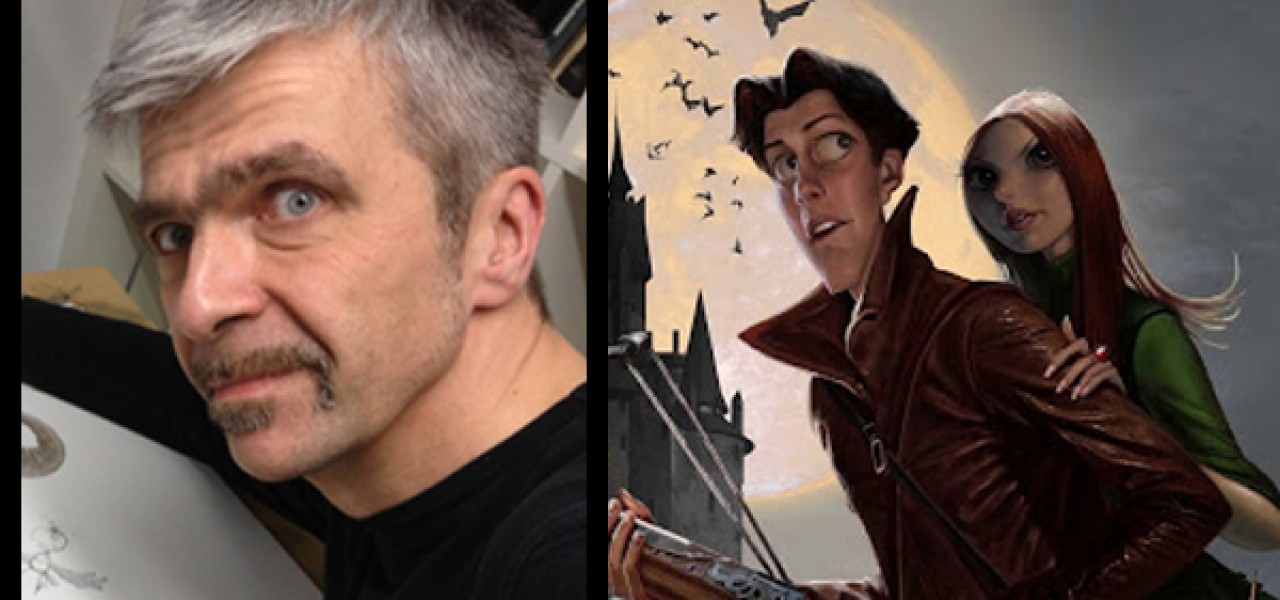
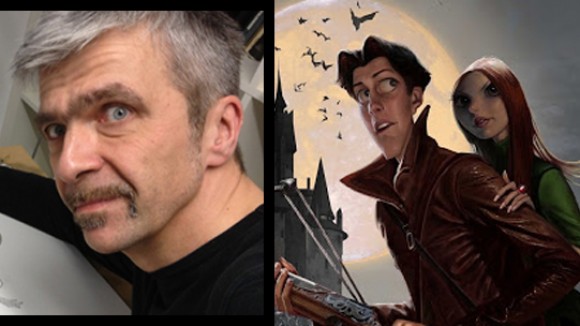
Uli Meyer’s Quest to Produce an Independent Animated Feature
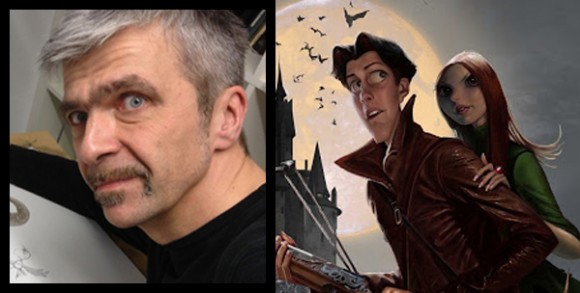 Without the support and deep pockets of a major studio, financing an animated film is a task of Sisyphean proportions, even for a skilled animator with decades of experience under their belt.
Without the support and deep pockets of a major studio, financing an animated film is a task of Sisyphean proportions, even for a skilled animator with decades of experience under their belt.
Animation veteran Uli Meyer (Who Framed Roger Rabbit?, An American Tail: Fievel Goes West, Ferngully: The Last Rainforest) recently posted 15 minutes of the story reel for his 90-minute CG feature film project MonsterMania, which has been in and out of pre-production for almost a decade. After 20 years of running his own commercial house and working on a variety of high profile projects like the special 70mm Lion King feature Circle of Life, the Mickey Mouse short Runaway Brain and large portions of the 1996 sports comedy Space Jam for Warner Bros., he has decided to focus on original animation productions.
From his studio in London, Meyer took time out of his busy schedule to talk with Cartoon Brew about the challenges of financing animated films, finicky studio tastes and the progress of his hand-drawn, half-hour St. Trinian’s featurette.
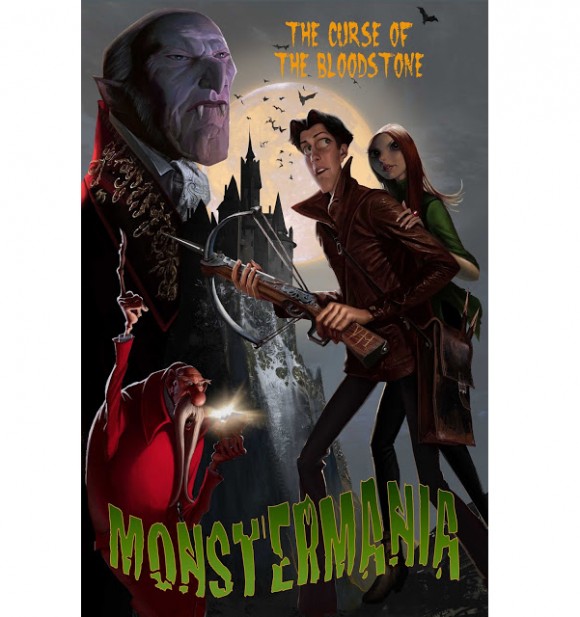 Cartoon Brew: Tell us about MonsterMania.
Cartoon Brew: Tell us about MonsterMania.
Uli Meyer: MonsterMania is a horror comedy featuring my own versions of the classic monsters and also a few new ones. The film is… wait for it… Young Frankenstein meets The Fearless Vampire Killers, but all animated.
An animated adventure with plenty of spooky moments and funny moments and monster moments — I get goosebumps just thinking about it. When Christopher Lee read the script, he immediately agreed to do one of the voices and we recorded him in 2007.
http://youtu.be/z4bR30fadqY
Cartoon Brew: You’ve been pitching the film to studios? How has it been received?
Uli Meyer: When I first took the film idea to Los Angeles to pitch to the major studios in 2004, I was hoping to secure a distribution deal. During my visit I found out that both Sony and DreamWorks had monster movies on their development slate (Hotel Transylvania and Monsters vs. Aliens, respectively), but I was not concerned; studios take notoriously long to green light anything and I hoped that I could outrun them once I had that distribution deal, but the other studios weren’t forthcoming. The argument was that DreamWorks and Sony were most likely to spend $100m+ on their films plus the same again on advertising. Because of that my measly $40m budget wouldn’t afford a movie that could compete.
Back in England I started looking into alternative ways to keep the project going. A $40m budget is tiny for US standards but was unheard of in Europe. I believe in a global success, but most European films at the time cost between $2m and $6m and they are never seen outside their home territory. I teamed up with a German producer team who assured me that they could get my film financed and they managed to raise an initial sum of money that was used to keep developing the film further, but after several half-witted attempts to find partners in European markets, it transpired that these guys had no idea what they were doing.
I always thought that my project would be perfect for Universal. Unfortunately all they were interested in was to make sure that my version of Frankenstein’s monster didn’t have bolts on the neck and wasn’t green. Universal was in the middle of trying to revive their monsters through live-action incarnations and that year the lacklustre success of Van Helsing somewhat dampened their enthusiasm.
Cartoon Brew: On your website you stated, “Trying to make a film independently has so far never quite worked out for my studio.” A lot of animators out there dream of one day making their own movie and believe that starting their own studio is the last step in that dream. In your experience, what has been the biggest hurdle in getting your own feature films made?
Uli Meyer: For the benefit of anybody who reads this, I am giving you a radically abbreviated account of some of the things that happened in my professional life so that you can draw your own conclusions. I absolutely encourage anybody to make their own film and find their way and maybe this account will help those individuals to avoid some of the downfalls.
As an animator you like nothing better than to create. The idea of having your own studio where you can beaver away is very exciting. But if making your own movie is your dream, setting up a studio first in order to one day make a movie is not necessarily the best way to make that dream happen. Running a studio is a huge responsibility, rent, rates, utilities, wages, insurance, equipment, maintenance, etc. become a monthly liability that demands a lot of turnover. Even at its smallest, my studio in London had to have a minimum yearly turnover of $1.2m just to break even. Most of the time you will find yourself working on client projects and frantically pitching for more work and the landlord will pocket most of your profits. If you work hard and find that there is a bit of spare money at the end of the year, you can use the little time left to do your own thing. But therein lies the problem; trying to make a feature film is a full time job and nigh impossible to achieve as a side project.
But let’s say you do. After a year or so working on your film, you will eventually realise that unless you want to do a Richard Williams (spending 30 years on a film that never gets made) you need to go out there and raise money. Now you will encounter the world of film finance, which is completely different to the world an animator/filmmaker inhabits. Yet, the one can’t live without the other. In order to learn the finance game properly, you will have to abandon your creative job and be prepared to spend considerable time learning about business and building business connections. I do not know many artists who have a head or the patience for that. I don’t. Instead I’ve tried to partner up with people who I hoped could fulfill that role. Unfortunately none succeeded. I actually believe they do not exist. If they would, they wouldn’t be looking for work.
Cartoon Brew: So, is navigating the feature development landscape any easier for an experienced animator such as yourself?
Uli Meyer: It has been fairly easy for me to arrange pitch screenings with the major studios because of my studio’s reputation. Building that reputation took a few years and animation was a different game then; it depended on the artist’s abilities to draw. Today there are so many studios out there creating highly polished digital images, it is difficult to lift your studio’s profile above the crowd based solely on your work. We would always create the most elaborate pitches, with proof of concept films to screen and design bibles to illustrate the ideas, but pitch methods change and if you consider that today some projects get green-lit based on a headline and mock-up movie poster, you can save yourself a lot of time and money. And you do not need to own a studio for that.
After more than twenty years of making commercials and creating animated films for clients, I decided earlier in the year to shutter up my commercial studio. I had a great time and am proud to have worked with so many talented and wonderful artists. But it is time to pay attention to my projects full time and explore all the new possibilities of making that dream happen.
Cartoon Brew: There seems to be an expectation from new animators and animation fans that the talented artists should simply get together and work on their own project independent of the big studios. But it seems like it’s far more complicated than that. What is the biggest misconception about the process of making your own feature length movie?
Uli Meyer: It always makes me smile when I read that suggestion somewhere. How would that work though? These guys have to earn a living and where would the money come from?
 Cartoon Brew: What’s your experience with crowdfunding? Do you intend on taking advantage of it with MonsterMania?
Cartoon Brew: What’s your experience with crowdfunding? Do you intend on taking advantage of it with MonsterMania?
Uli Meyer: I’m happy to say that I successfully completed a Kickstarter campaign to produce a picture book entitled Cuthbert was Bored. It was a great experience and worked well for the relatively small amount of funding I was seeking. Running a campaign is a lot of hard work if you want it to succeed. For its 30-day duration I worked nearly full-time on simply creating awareness. After stretching past my goal, I delivered the book I wanted to make.
I am considering a Kickstarter campaign for MonsterMania and working on how to make it work and how to get backers excited – and most importantly on how to get it out there and how to advertise it. I am thinking about what could be the reward for backing an animatic? It couldn’t be the actual animatic for obvious reasons. Maybe access to a production diary and artwork, limited edition merchandising, only available for Kickstarter backers might be a way? Something that is great value for money. I’m still thinking and suggestions are welcome.
Cartoon Brew: When it comes to film production do you believe crowd funding is a viable option? Do you think it has any shortcomings?
Uli Meyer: The biggest hurdle is creating awareness. If nobody knows your project is out there, you’re doomed to fail. You have to reach those few thousand animation enthusiasts to back your project with a few quid each. I am sure they are out there.
I can see Kickstarter or similar sites changing the way film projects get financed — especially short films and other non-commercial formats could get a new lease of life. I have always wanted to make a Tex Avery style short, hand-drawn, watercolor backgrounds, fully animated entirely the traditional way. Just like the original ones. While there is no way to ever finance a thing like that today through the old channels, crowd funding is a viable option.
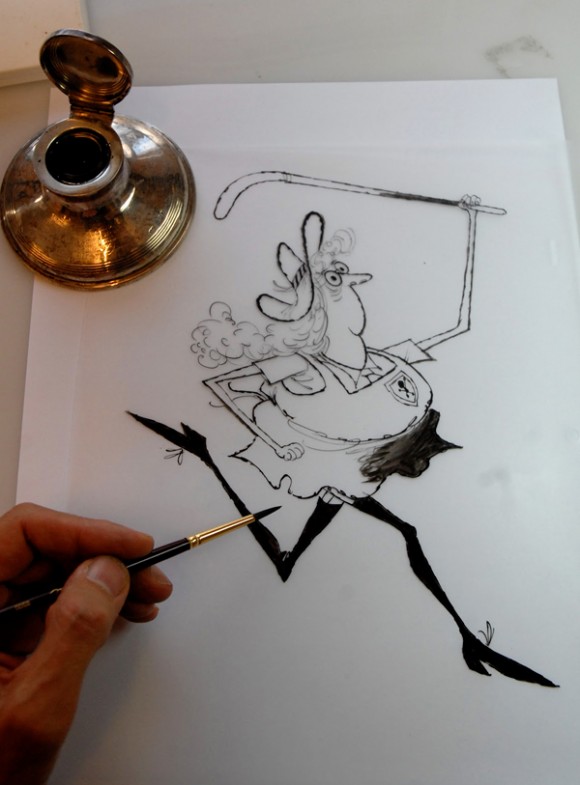
Cartoon Brew: Last year, you announced the shelving of your St. Trinian’s project due to unforeseen setbacks. Can you say anything about the status of that project?
Uli Meyer: The St. Trinian’s project is still on hold. It is all to do with animation rights that were erroneously sold as part of a package to a live action company who wants to make their version. They do not have the rights to Ronald’s designs though; I am the only one who has permission to use them. Not that they are interested in animation. But they refuse to license the animation rights to me. For what reason one can only guess.

